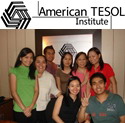Resume and Interview Tips
There is every chance that elements of this article may not be appropriate for everyone in every situation and thats precisely the point! Every situation is different. No two projects are the same. No two Curriculum Development Specialist roles are necessarily identical, but for name. Context, duration, region, sub-sector and many other factors are likely to create requirements that are unique, even when very similar. So a standard CV, or your most recent one with a date change is not necessarily the best one to submit and I would contend, never the way to approach submitting a CV within a project.
Take for example how many large project management companies deal with CVs and their database of consultants. Advertisements on their websites, in development magazines and in newspapers and other media often call for experienced persons to register interest for involvement across various sectors. Some such firms have an online completion process, which facilitates the database search functionality, and others accept traditional CV style submission. It is very unlikely that this CV will be used without modification in a tender submission.
Why?
As introduced, CVs seldom serve multiple purposes to the same degree of success. Your CV to an organisation to gain registration on their database should be tailored to the requirements of that firms request, and for the express purpose of making sure that when they are searching for your expertise they find you. [Remember that last month I wrote about promoting yourself, and made the point that if you only submit a CV, you are probably not doing enough visibility, communication etc needs also to be incorporated into your strategy].
So what needs to be done?
Each time your CV is put in for a project, it should be tailored to the exact requirements of that project, including tailored to the selection criteria and with consideration for the other team members to demonstrate breadth and balance within the team.
But, this takes a fair amount of time.
Yes it does! And, it is time that requires input from you, the individual, as well as the firm pulling together the tender submission. Other than the obvious business development imperatives in preparing the best possible CV, we are not being honest to the cause, not taking seriously enough the importance of the project we are tendering for if we do not invest the time to really consider why we have the right team, and how to demonstrate that. The CV is a key tool to demonstrate higher- level understanding of the projects unique requirements.
So, how do we approach this?
Once you know the format, or requirements, then some basic principles can be followed, including:
Identify the key selection criteria and ensure the CV specifically addresses and/ or demonstrates achievement against each
Identify specific role requirements within the project and emphasise relevant examples in the CV
Consider specific project risks and identify ways to demonstrate through the CV that by choosing this person [team] these risks are nullified
Identify project key success factors and key outcomes targeted, and emphasise similar achievements
Follow the concept where possible of what it was like; what I did; what it looks like now and why it is better to demonstrate impact and value in past roles and experiences
Consider a summary section, at the beginning, to emphasise suitability for role [maintain formatting compliance obviously]
Use achievement language led, developed, implemented, managed etc
Maintain readability short sentences; only information that is necessary to demonstrate appropriateness; white space on paper; colour etc
Make sure someone other than the individual and the author reviews the CV for quality.
Many agencies calling for tenders where a CV is required often ask for information in a set format actually, many times they ask for specific information, not always in a set format. This is an important distinction, as it gives some freedom to where information is placed in the document, such that you place your most important information where it will be read early. Never lose sight of the fact that the CV is a selling document.
The beauty of approaching the CV this way is that the CV often provides an opportunity to extend the technical submission, which is usually bound to a page limit, by incorporating, emphasising or reiterating key points.
Finally, I cannot emphasise enough the importance of the pre-submission quality review, and this is equally important for the CV. Have we got the best team? Have we really demonstrated competence against each criterion? Does the CV read as though it is part of the broader tender submission? Is there anything we have missed?
The right team can be a bid winner certainly worth the time and investment to ensure their CV leads to this result.
Preparing winning CVs www.meldunn.com.au
Mel Dunn is Managing Director of Global Business and Development Solutions, which works with individuals and organisations that are committed to business success and the success of others. We work globally and locally and focus on providing sustainable solutions for our clients.














